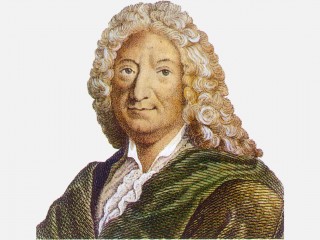
Alain René Lesage biography
Date of birth : 1668-05-06
Date of death : 1747-11-17
Birthplace : Brittany, France
Nationality : French
Category : Famous Figures
Last modified : 2010-11-10
Credited as : Novelist and playwright, ,
The French novelist and playwright Alain René Lesage (1668-1747) created a vision of his transitional epoch as rich in good humor as in moral failings.
Born in Brittany, Alain René Lesage went to Paris to study and practice law, soon abandoning this first career for a literary vocation which made him entirely dependent on his pen, with the distinction of being perhaps the first French writer to support himself and his family solely by the pursuit of letters. The early years of his career were given over to hackwork and translations from Spanish theater and romance. Lesage was in fact approaching middle age when, in 1707, he experienced his first personal successes with the comedy Crispin rival de son maitre and a novel, Le Diable boiteux, inspired by Antonio de Guevara's Diablo conjuelo.
Lesage pushed his satirical bent to the limits of audacity in 1709 in a bitter comedy, Turcaret, which unmasks the moral depravation of a former lackey risen to the equivocal heights of high finance. Clearly out of step with the revered conventions of the Comédie Fraçaise, Lesage began a long feud with "respectable" theatrical people of his time and henceforth dedicated his dramatic talents to the production, singly or in collaboration, of more than 100 farcical vaudevilles.
The influence of Lesage on the novel remains far more profound and permanent. Gil Blas, a picaresque romance, began appearing in 1715 and was not completed until 1735. Within the broad lines of a Spanish narrative convention, Lesage gave free rein to a satirical originality founded securely in the French comic genius of Moliere and Jean de La Bruyere. Moreover, his picaro was far less soiled than most and, ultimately, was open to improvement, even to the development of a modest wisdom, disillusioned perhaps, but above all conscious of the healing and elevating effects of time and calm reflection. Critics have found in Gil Blas a dual moral significance linked conceptually to the novel's form: on the satirical side, life is seen to be a theater of illusion, pretension, weakness, and deceit, while on the constructive side, man comes into his own—literally becomes himself—only after a series of painful meanderings; yet this often pitiable life is of inestimable value, since its vagaries have as their end product man himself.
Lesage wrote several other novels, all of lesser importance: they include Les Aventures de M. Robert Chevalier, dit de Beauchqne (1732), set in French Canada and filled with swashbucklers and Indians, and other experiments in the picaresque such as Don Guzman d'Alfarache (1732) and Le Bachelier de Salamanque (1736). His last years were spent far from Parisian distractions, at Boulogne-sur-Mer, in just the sort of happy retreat among devoted members of his family which had been the reward of his worldly-wise hero Gil Blas.
Full-length studies of Lesage are in French. In English, chapters or partial treatments of him appear in Frederick C. Green, French Novelists, Manners and Ideas: From the Renaissance to the Revolution (1928; rev. ed. 1964); Lester George Crocker, An Age of Crisis: Man and World in Eighteenth Century French Thought (1963); and Vivienne Mylne, The Eighteenth-century French Novel: Techniques of Illusion (1965).
















